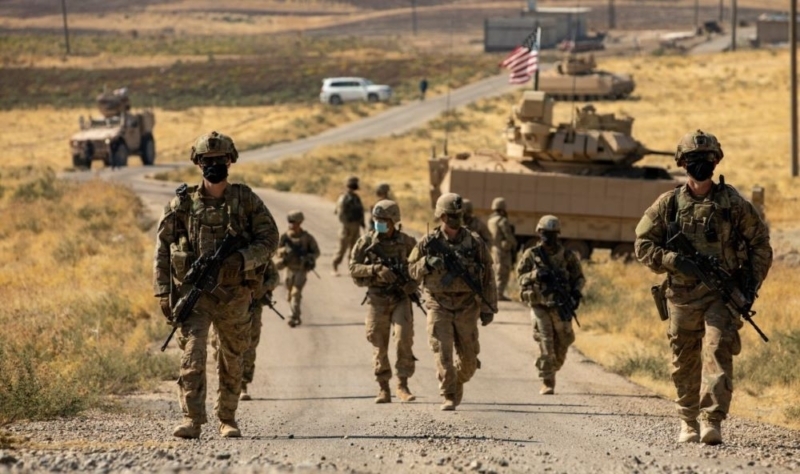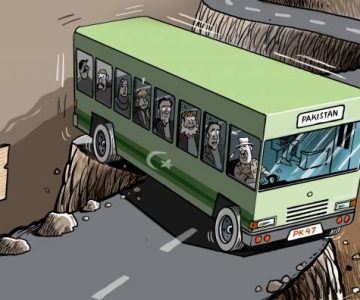This is an astounding figure. Not to mention the loss of over 1 million civilians, the sectarian blood-baths, the destruction of a civilisation and reduction of a country to rubble..
And, this economic cost is just a little part of this sordid, ugly tale of our times. Naomi Spencer writes:
Stiglitz said the costs of the wars in Iraq and Afghanistan would be somewhere between $5 trillion and $7 trillion for the US alone. Another estimated $6 trillion will be borne by other countries, he said.
…More than a million civilians have been killed in Iraq alone. Some 4.5 million more have been displaced by the violence, with thousands of refugees fleeing the country into Syria, Jordan and elsewhere every day. With $3-5 trillion, the US government has destroyed an entire society.
……One consequence of the chaos wrought in the Middle East, Stiglitz asserts, has been the enormous rise in the price of oil. For industrialized countries, the increase in the cost of oil attributable to the war is around $1.1 trillion. For developing countries, the effect has been much more extreme. According to Stigltiz’s and Bilmes’ book, the increase in the cost of oil more than offsets the increase in foreign aid to countries in Africa.
Spencer’s article in full can be read below:
As the five-year anniversary of the US invasion of Iraq approaches, a leading economist is estimating that the overall cost of the war will be between $3 trillion and $5 trillion. This figure does not take into account the enormous devastation that the US military has wrought upon the population and social infrastructure of Iraq.
On Thursday, Joseph Stiglitz told the congressional Joint Economic Committee that $3 trillion was at the low end of estimated war costs. After factoring in the cost of weapons and operations, future health-care costs for veterans, interest on foreign loans used to fund the war, and future borrowing, Stiglitz said the costs of the wars in Iraq and Afghanistan would be somewhere between $5 trillion and $7 trillion for the US alone. Another estimated $6 trillion will be borne by other countries, he said.
Stiglitz, former chief economist for the World Bank and a Nobel laureate, is co-author with Harvard economics professor Linda Bilmes of The Three Trillion Dollar War: The True Cost of the Iraq Conflict, a book released Friday. The book builds on 2006 research that estimated the cost of the so-called war on terror in excess of $1 trillion.
Officially, the US spends $16 billion every month to occupy Iraq and Afghanistan, but this figure includes only direct expenses.
These enormous sums are being expended to carry out a crime of immeasurable proportions. More than a million civilians have been killed in Iraq alone. Some 4.5 million more have been displaced by the violence, with thousands of refugees fleeing the country into Syria, Jordan and elsewhere every day. With $3-5 trillion, the US government has destroyed an entire society.
Those charged with carrying out the conquest have also been sacrificed. Over 5,000 military personnel—the vast majority US troops—have died in the wars against Iraq and Afghanistan since 2001. A substantial portion of the estimated costs will go to pay for health care for the tens of thousands of wounded soldiers.
The American ruling class has initiated a policy of unending war as it cuts jobs and social programs in the United States. According to Stiglitz and Bilmes, $1 trillion could pay for 8 million housing units, university scholarships for 43 million students, health care for 530 million children, or the salaries of 15 million public school teachers in the US.
In an interview published Thursday in the British newspaper,the Guardian, Stiglitz noted that the US spends $5 billion a year in aid to Africa. “Five billion is roughly 10 days’ fighting, so you get a new metric of thinking about everything,” he said.
The United Nations estimates that $195 billion would end world hunger and most of the devastating diseases afflicting the world’s poor. AIDS, measles, tuberculosis, malaria and other water-borne illnesses could all be brought into manageable numbers or wholly eradicated within a short time for less than the cost of one year of waging war in Iraq. Instead, the US occupation of Iraq has reintroduced diseases such as cholera into Iraqi society.
For years, the US political establishment has carried out attacks on social programs and the jobs of American workers. Workers are now told that there is no money for decent wages and benefits, while billions are spent on military wars of aggression.
One consequence of the chaos wrought in the Middle East, Stiglitz asserts, has been the enormous rise in the price of oil. For industrialized countries, the increase in the cost of oil attributable to the war is around $1.1 trillion. For developing countries, the effect has been much more extreme. According to Stigltiz’s and Bilmes’ book, the increase in the cost of oil more than offsets the increase in foreign aid to countries in Africa.
The White House, which refused to testify before the Joint Economic Committee on the cost of the war, reacted to Stiglitz’s remarks with undisguised hostility and derision. “People like Joe Stiglitz lack the courage to consider the cost of doing nothing and the cost of failure,” White House spokesperson Tony Fratto told the press. “One can’t even begin to put a price tag on the cost to this nation of the attacks of 9/11.”
The Iraq war, Fratto said, “is also an investment in the future safety and security of Americans and our vital national interests. Three trillion dollars? What price does Joe Stiglitz put on attacks on the homeland that have already been prevented? Or doesn’t his slide rule work that way?”
Stiglitz told Democracy Now! radio on Friday that the most significant budgetary cost of the war is the care of disabled veterans, which he said “will total hundreds of billions of dollars over the next decades.” The war has inflicted a huge number of injuries. He said that an estimated 39 percent of soldiers would have some form of disability after completing their rotations.
Bilmes, who also appeared on the Democracy Now! program, explained that while in previous wars the ratio of wounded to dead was two-to-one or three-to-one, new medical technologies have allowed many who might otherwise have died to survive extremely serious injuries. The wounded to fatality rate for the Iraq war is approximately 15-to-1. “What it means is that the United States has a long-term cost of taking care of many, many thousands of disabled veterans for the rest of their lives,” she said.
“Then you go beyond that budgetary cost to the cost of the economy,” Stiglitz added. “When somebody gets disabled, the disability pay is just a fraction of the loss to their family, to the income that they could have otherwise earned.”
“There are a whole set of macroeconomic costs, which have depressed the economy,” including the price of oil, Stiglitz said. “What’s happened is, to offset those costs, the Federal Reserve has flooded the economy with liquidity…. We were living off of borrowed money. The war was totally financed by deficits. And eventually, a day of reckoning had to come, and now it’s come.”
While the vast majority of the US and world population wants an end to the occupation in Iraq, no section of the political establishment represents this opposition.
An article in the Wall Street Journal on Friday noted that the Democratic presidential candidates, Senators Barack Obama and Hillary Clinton, employ careful rhetoric on the issue of withdrawal from Iraq. “Both candidates draw a distinction between ‘combat’ troops, whom they want to withdraw, and ‘noncombat’ troops, who will stay to battle terrorists, protect the US civilian presence and possibly train and mentor Iraqi security forces,” the newspaper noted.
This distinction allows the candidates to posture as opponents of the war while maintaining their commitment to an indefinite occupation.
“No one is talking about getting to zero,” a foreign policy advisor for Obama told the Journal. An unnamed Obama campaign “senior advisor” said the senator was “comfortable with a long-term US troop presence of around five brigades,” according to the paper.



